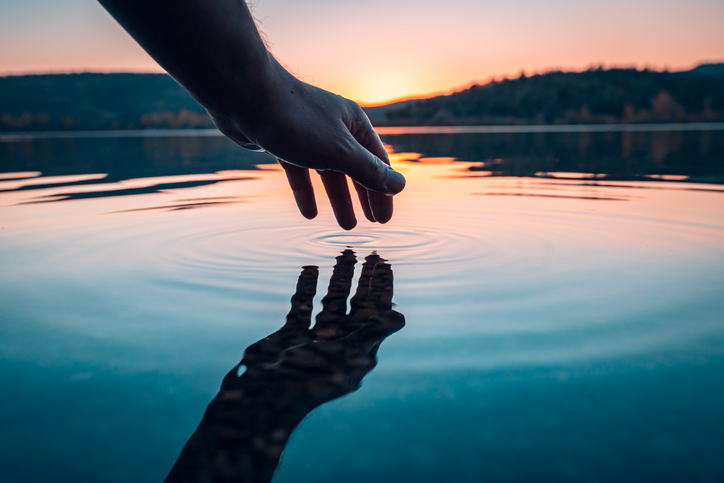Just Add Water: The Science of Water and Wellbeing

Let’s look at the Science of Water and Wellbeing. This is the first in a series of articles inspired by Wallace J. Nichols, a PhD who has turned his passion for water into his life’s work. He is the author of “Blue Mind: The Surprising Science That Shows How Being Near, In, On, or Under Water Can Make You healthier, More Contented and Better at What You Do.”
The “Blue Mind” book, and his research, Blue Mind Conferences, public appearances, and blog have had a profound influence on me and on millions of people around the world. Nichols is one of those unique individuals who doesn’t just research, or teach, or preach about the deep connections between water and humanity. He lives it and writes from firsthand experience.
A ‘lab rat’ jumps in the water
“I’m a human lab rat,” Nichols writes in the opening paragraph of his book, “here to measure my brain’s response to the ocean.” He jumps off a pier on North Carolina’s Outer Banks, wearing a skintight cap bristling stainless steel connectors with long cables connected to a mobile electroencephalogram (EEG) unit.
The device was developed by Sands Research, the same company whose advertising impact studies produce the Annual Super Bowl Ad Neuro Ranking report. The 68 electrodes plugged into his head track every neurological response to his plunge into the ocean.
This dive is a success but it’s just one of a multitude of research projects reported by Nichols that tell us more about human responses to water. His interest extends to water in all its forms, uses and places, from bathtubs, to pools and ponds, streams, rivers, lakes, bays, and oceans.
Blue minds assembled
In 2011, he assembled the first Blue Mind conference in San Francisco. It was to become an annual event where he brought together, “neuroscientists, cognitive psychologists, marine biologists, artists, conservationists, doctors, economists, athletes, urban planners, real estate agents, and chefs.”
Like the book, Blue Mind conferences would “explore the ways our brains, bodies, and psyches are enhanced by water.” It’s all part of his quest to understand, “how humanity interacts with our watery planet.” Thanks to Nichols and the diverse array of researchers, philosophers, and water workers he introduces us to, we can see more clearly how deeply human wellbeing is tied to water.
We’re attracted to water because we are water
How could we not be drawn to water? Nichols tells us we came from water, and our bodies are water containers. The human body is almost the same density as water. It’s why we can float.
◦ We are 78% water at birth, 60% as we grow older
◦ The brain remains at a steady 80% water throughout our lives
◦ The minerals and salts in our cells are nearly the same composition as seawater
Water is everywhere and we want to be near it
As Nichols points out, 70% of the earth is covered by water, and 80% of the world’s population lives within 60 miles of an ocean, lake or moving water. Yet, many want to get closer.
We have a relationship to water that reaches beyond the biological need to satisfy our daily thirst. Seeing water, hearing water, smelling water, being by water, on water, in water. If we can’t live by a body of water, many of us will travel long distances to experience it, even for a short time. In urban areas we will seek out water settings, or create our own WaterSpaces—a pool, fountain, pond, or some water feature in our homes. We prefer to work, shop and dine in places near water and will pay a premium for a home or a room with a water view.
These may seem less urgent needs, but as Nichols writes, they are often tied to biological drives, or mental and health needs that want to be filled—perhaps can only be filled—through our connection to water. This water connectedness is part of what the philosopher and psychologist William James called mystical consciousness, “an awareness entirely different from our typical waking state.” James wrote:
“We are like islands in the sea, separate on the surface but connected in the deep.”
In future “Just Add Water” articles, we’ll explore how many of our environmental water needs can be filled right at home. And we’ll also look at how you can join the growing trend of people helping others to understand The Science of Water and Wellbeing and to experience a deeper relationship with our blue planet.

